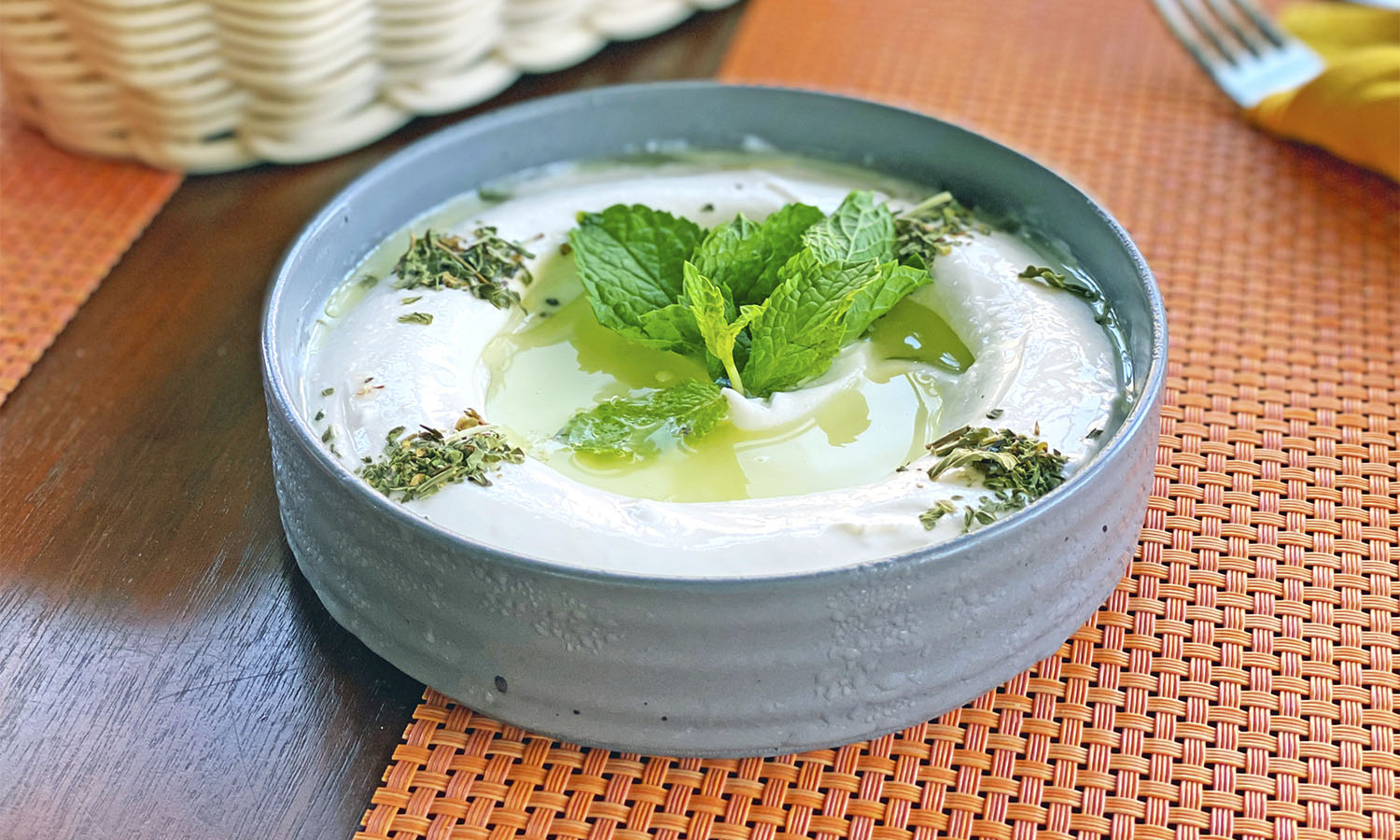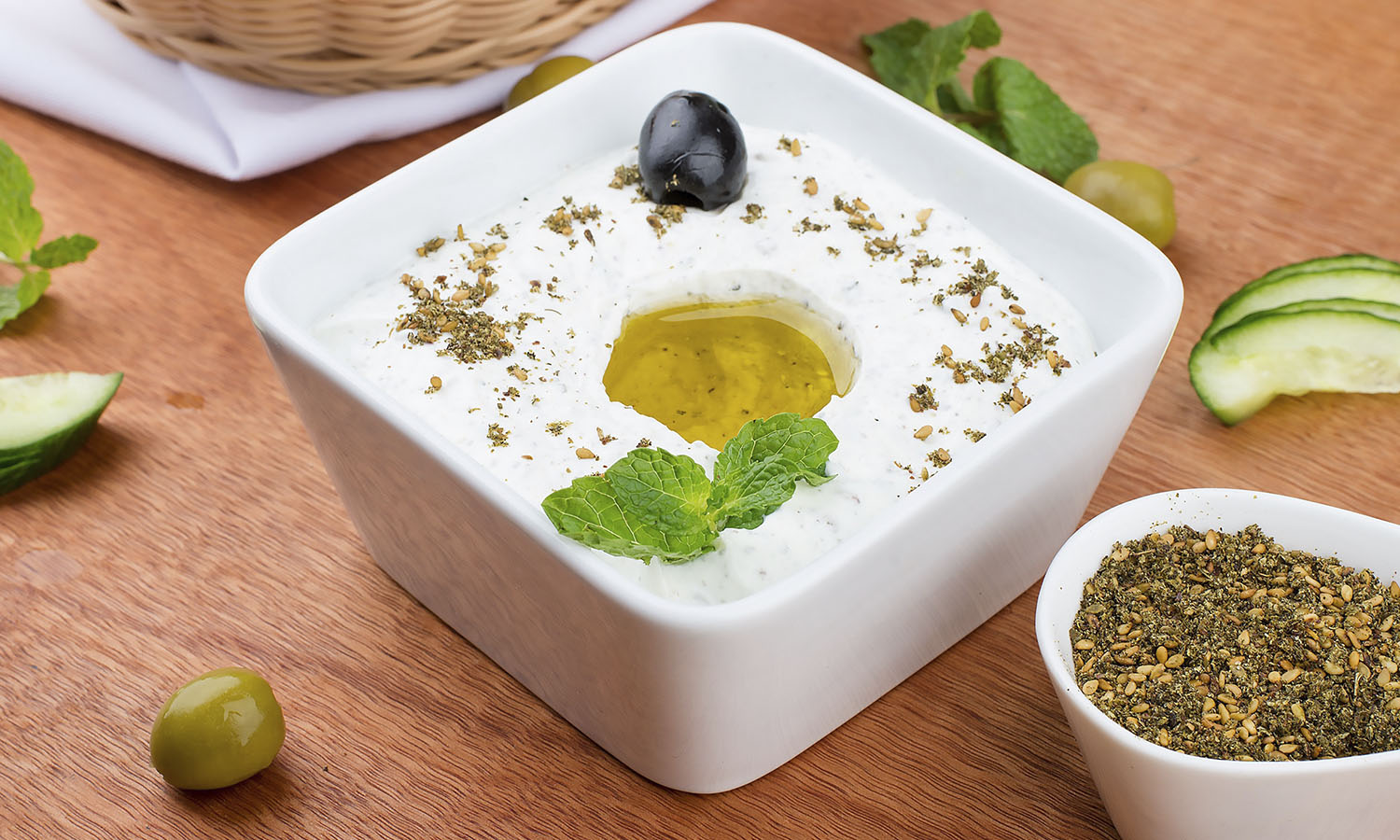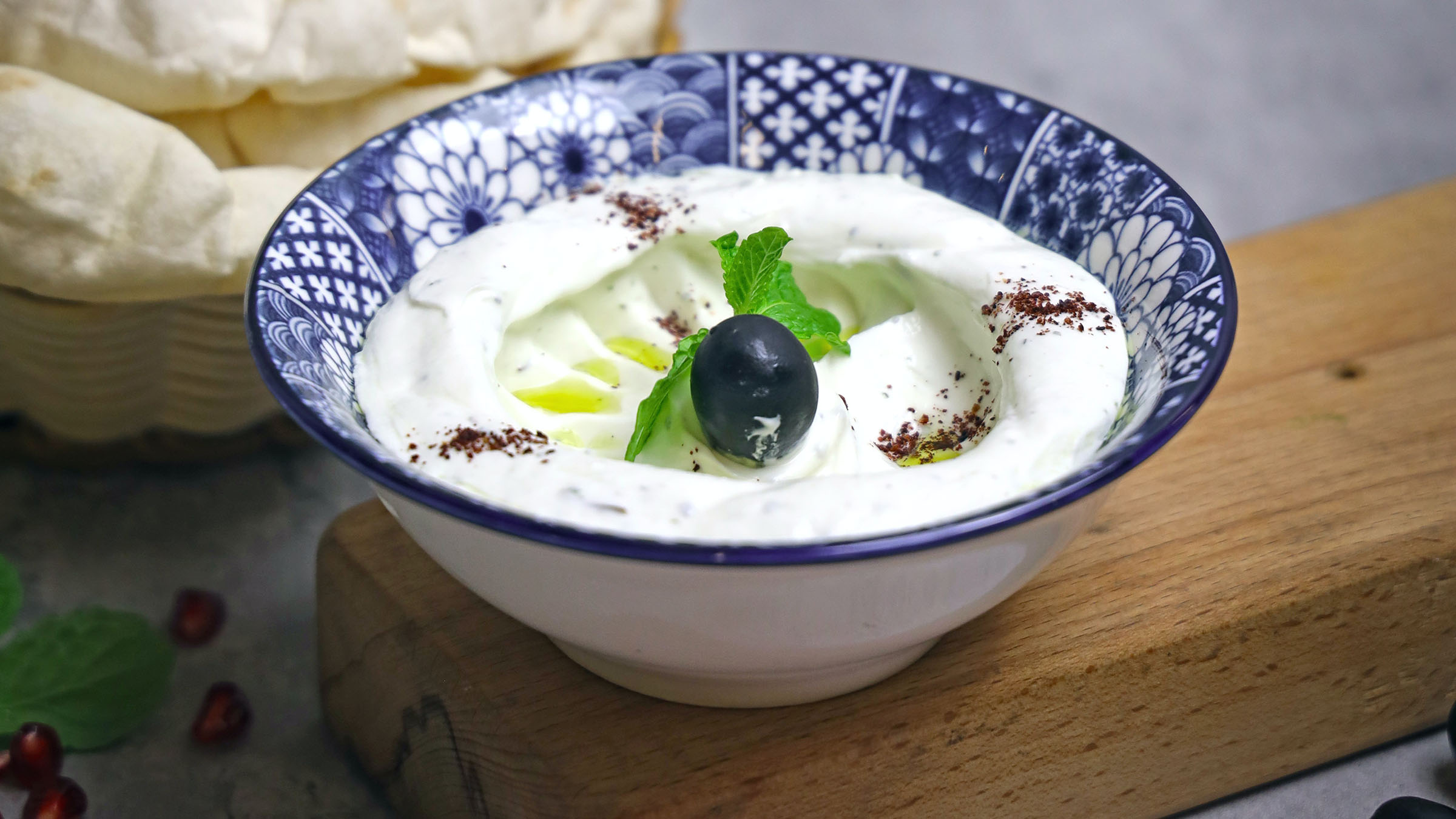The Greeks lay claim to a lot of wonderful things: democracy, architectural harmony, a hundred different words to say you love someone, and tzatziki. But like it or not, the ubiquitous and beloved tzatziki dip has much deeper roots.
The Greek Recipe
In its most traditional iteration, Greek-style tzatziki is made from strained yoghurt (Greek yoghurt or labneh, and ideally sheep’s milk), shredded cucumber, garlic, olive oil and salt. Some recipes include a spritz of lemon juice or vinegar, as well as the addition of fresh herbs including mint, dill, parsley, oregano and thyme, and sometimes even carrots.
The pop of cool and tangy yoghurt combined with crunchy cucumber makes tzatziki a quintessential summer condiment, and yet this popular spread is served year-round as a side dish or even the main event. Throughout the Mediterranean, Middle East and southeastern Europe, the dish is usually served as a meze (appetiser) with or without flatbread, or as a condiment to accompany a main course.

In Greek cuisine, you’ll find tzatziki in many forms: as a dollop atop a savoury grilled souvlaki or lamb gyro, or served aside a tidy row of dolmades (stuffed grape leaves). When served in the middle of a veggie platter or surrounded by pita bread, tzatziki begs you to dip in and scoop generously.
Chef Vangelis Panagiotou, who leads the team at Φιτα (Fita) – one of Athens’ most impossible-to-book tables – confirms that the yoghurt- and cucumber-based dip is indeed a staple of the national cuisine. He has fond memories of his grandmother serving it at lunch, followed by long naps stretching well into the afternoon.
While tzatziki appears on menus all over the country, from humble tavernas to upscale bistros, Chef Panagiotou explains that the condiment is most likely to be enjoyed at home with a family dinner, or among friends, usually alongside a meat-based dish like souvlaki, meatballs or sausages.
Should your evening have more amorous aspirations, however, Panagiotou warns against a spoonful of tzatziki at all costs. He jokes, “If you have tzatziki while you are out on a date, and plan on flirting with someone, you are definitely going to smell like garlic!”
Going Light On The Garlic
Irini Solomou, a born and raised Athenian, food and wine blogger, and co-owner of a wine bar and bistro in the chic Glyfada neighbourhood, makes a less garlicky version for her international friends who aren’t as accustomed to raw garlic.
Solomou suggests flavouring the olive oil with a whole or halved garlic clove instead of adding minced garlic directly into the recipe. This way you get the classic garlic flavour, but in a more subtle quality.
While vacationing on a tiny Greek island, Irini also picked up a tip from a souvlakeri (any place specialising in souvlaki, from a restaurant to a kiosk): the addition of finely chopped ginger in place of garlic. Ginger root brings its own brand of heat but is far more digestible. It also contrasts nicely with salty, charred souvlaki.
Another option is a combination of the two. Ginger is known to reduce and balance the burn of garlic (think: satay peanut sauce or ginger garlic chicken).

Trading Flavours
Garlic is certainly elemental to the modern-day Greek recipe, which has evolved considerably over centuries, but the yoghurt and cucumber combo has been around for even longer and most likely originated on the Indian subcontinent. There’s a blaring gastronomic throughline connecting Indian raita to Greek tzatziki.
The former is lighter, cooler and cleaner: regular yoghurt mixed with cucumber and delicately flavoured with cumin, mint and cilantro. Raita is traditionally served alongside intensely flavoured dishes like biryani and spicy curries. Ayurvedic principles can be traced throughout Indian cuisine: raita serves as a cooling agent to balance heat in the body.
During the Muslim conquest of Persia, Zoroastrian inhabitants of what is now modern-day Iran fled the Middle East and settled in northern India in an effort to preserve and practise their religion freely. While there, the Persians absorbed elements of Indian culture and cuisine, including raita. What is now tzatziki most likely made its way back to the Balkans and the southern Mediterranean during the height of the Ottoman Empire via Persian traders. In fact, the Farsi word zhazh, which refers to a ‘mixture of herbs’, is at the root of both Turkish cacik (pronounced juh-jeek) and Greek tzatziki.
Variations On A Tzatziki Theme
The Turkish cacik recipe is similar to the Greek one, but with an emphasis on dried mint (the mintier, the merrier) and lemon juice. The classic cacik skips the shredding and draining of the cucumber, as it is meant to be a little less dense and more like a soup or sauce. The addition of a handful of shredded carrots is a popular take on the original. Likewise, chopped nuts, grains and tangy sumac spice have also been known to show up in Turkish recipes.
In step with its concentric cultural heritage, the Cypriot version of the dip goes by three names: tzatziki, cacik and talatouri, and takes inspiration from the Turkish variation, with more mint and lemon juice, and a more watery consistency. Meanwhile, throughout Bulgaria and the Balkans, the dish goes by the name tarator (not to be confused with tahini), and also takes the form of a cold soup or sauce with dill as the main herb.
The Classic Tzatziki Recipe
When it comes to authentic Greek tzatziki recipes, the essential ingredients are always the same, but quantities are variable. Consistency is key, as tzatziki is known for its rich and creamy texture. This recipe is a good place to start.
450 grams strained Greek yoghurt or labneh
350 grams cucumber
15 grams (2 teaspoons) minced or finely pressed fresh garlic
6 grams (1 teaspoon) vinegar or freshly squeezed lemon juice
45 grams (3 tablespoons) extra virgin olive oil
Salt and pepper to taste
1. De-seed the cucumber, then grate it, sprinkle with a pinch of salt, and squeeze or press to extract as much water as possible.
2. Combine all ingredients and refrigerate for at least two hours prior to serving.
3. Garnish with a hefty drizzle of olive oil and your choice of parsley, dill or mint.
Tips & Tricks
Avoid low-fat yoghurts, as they tend to produce a watery dip. The drier the better. English or Persian cucumbers are ideal. If your cucumber is juicy, strain it with a sprinkle of salt for thirty minutes prior.
Tzatziki is a product of centuries of shared culinary traditions, which makes it a joy to improvise, so once you’ve mastered the basics, feel free to experiment. Solomou loves to add avocado, for example, which she describes as a “romanticised” version of the classic. The sauce turns green, and tastes and feels as fresh as it looks.














Sorry, the comment form is closed at this time.